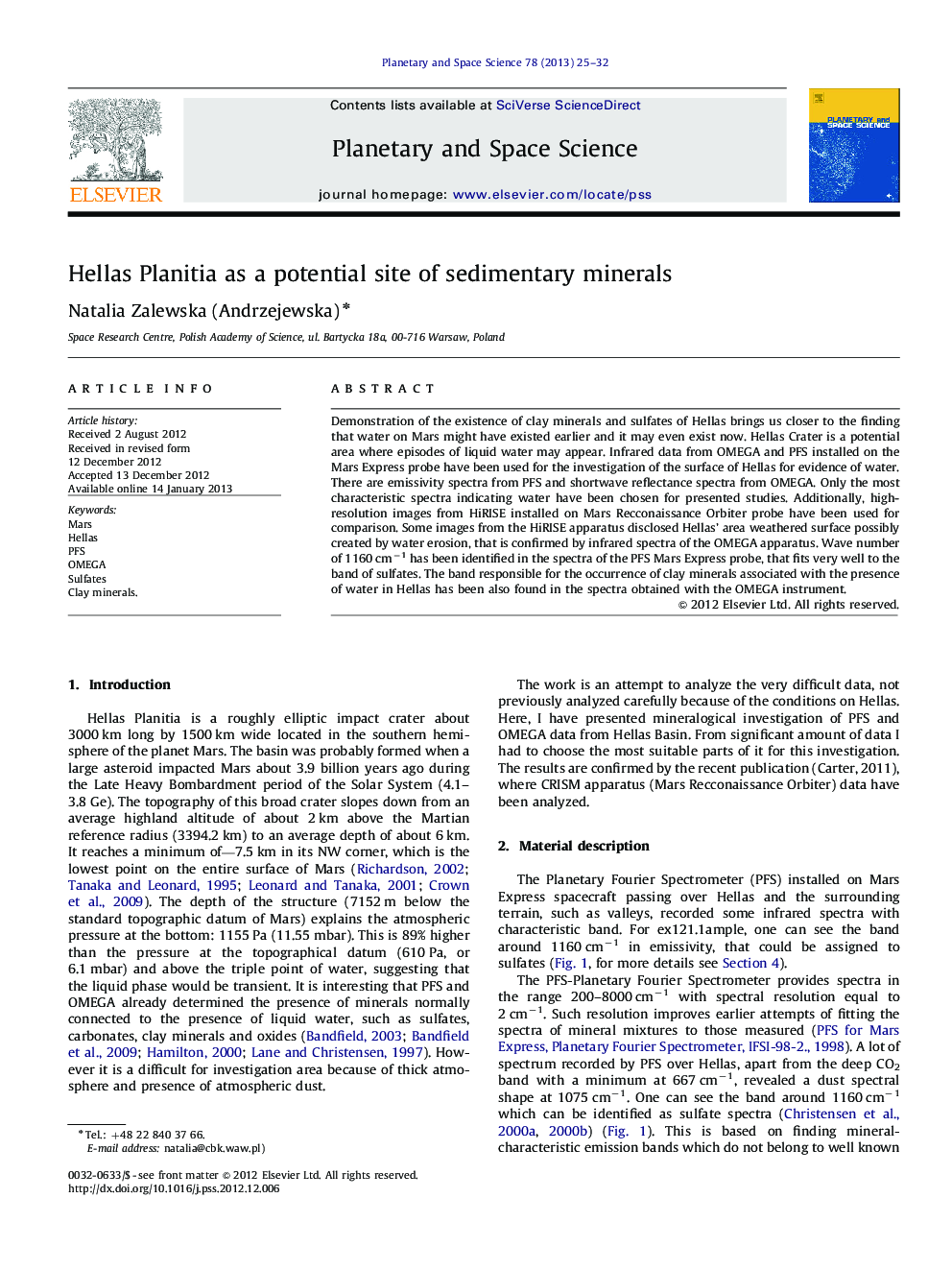| Article ID | Journal | Published Year | Pages | File Type |
|---|---|---|---|---|
| 1781329 | Planetary and Space Science | 2013 | 8 Pages |
Demonstration of the existence of clay minerals and sulfates of Hellas brings us closer to the finding that water on Mars might have existed earlier and it may even exist now. Hellas Crater is a potential area where episodes of liquid water may appear. Infrared data from OMEGA and PFS installed on the Mars Express probe have been used for the investigation of the surface of Hellas for evidence of water. There are emissivity spectra from PFS and shortwave reflectance spectra from OMEGA. Only the most characteristic spectra indicating water have been chosen for presented studies. Additionally, high-resolution images from HiRISE installed on Mars Recconaissance Orbiter probe have been used for comparison. Some images from the HiRISE apparatus disclosed Hellas' area weathered surface possibly created by water erosion, that is confirmed by infrared spectra of the OMEGA apparatus. Wave number of 1160 cm−1 has been identified in the spectra of the PFS Mars Express probe, that fits very well to the band of sulfates. The band responsible for the occurrence of clay minerals associated with the presence of water in Hellas has been also found in the spectra obtained with the OMEGA instrument.
► Hellas Basin was filled with water in the past. ► Hellas has the deepest point on Mars where water could be appearing in the liquid phase. ► Clay minerals are present as a component of weathered basalt in OMEGA spectra. ► Band from PFS around 1160 cm−1 may indicate a deep band of gypsum. ► Clay minerals are the composition of relict of lakes located between sand dunes.
